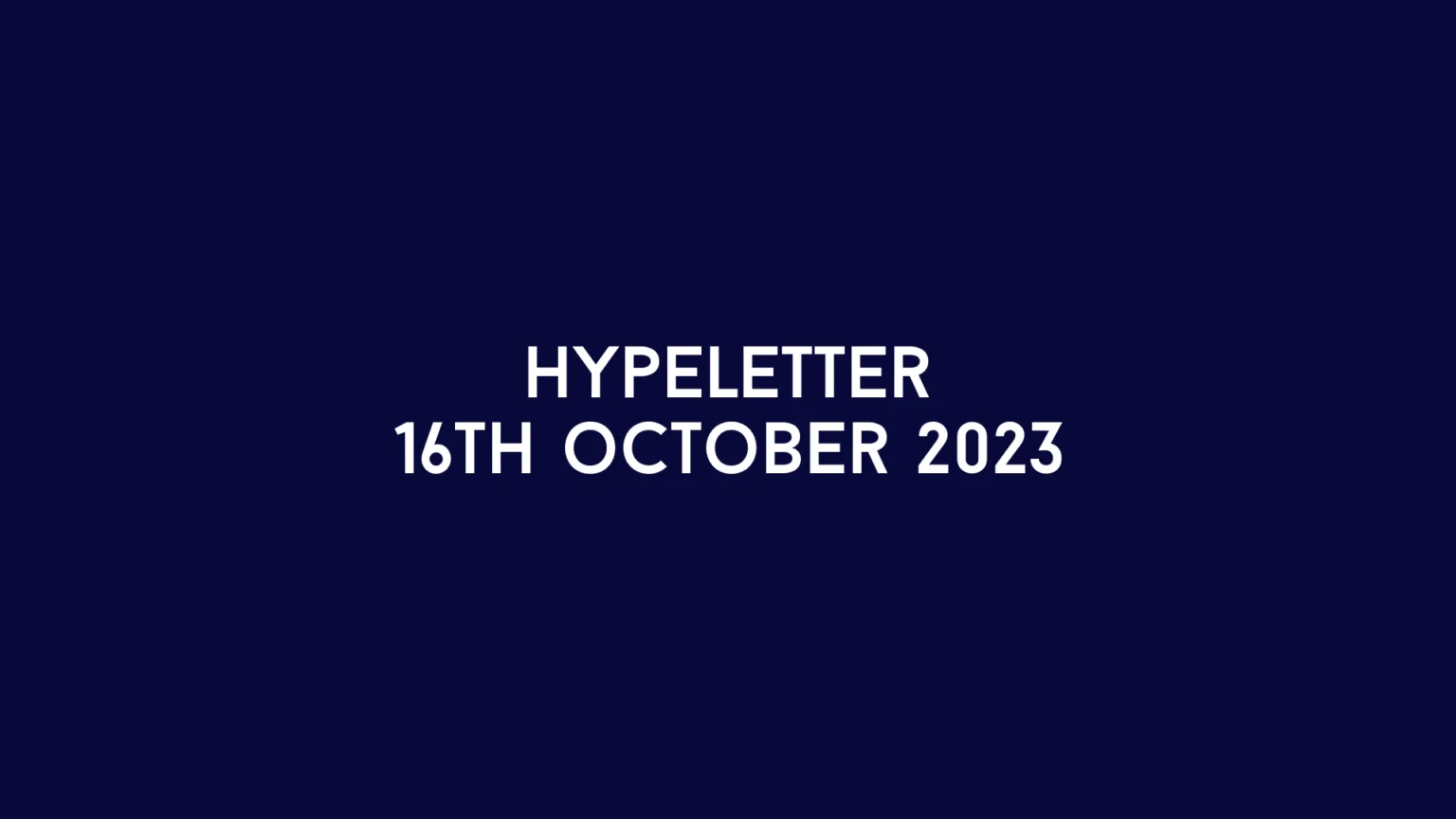
HYPELETTER - 16/10/2023
It’s been a while.
Long Time No See
Hello again! I just want to start off by saying that we’ve been working diligently behind the scenes to turn the vision of our projects into a reality. Over this period, we’ve not only been busting our buttocks but also accomplishing significant milestones that progress us towards the future. As each week goes by, there are new challenges arising and issues that are being tackled. Decisions that have potential consequences down the line are being made quicker than ever. There have been dull days and bright days, but we manage to keep gaining more momentum.
Over this Hypeletter, we’ll cover some major developments that have occurred since the last one. Buckle up because this is going to get saucy…
Hypeletter Changes
Project Eris Highlights
It’s been a while, and we’ve been working really hard behind the scenes to bring Project Eris to life. Over this period, some significant milestones have been achieved:
- Implementing the Encounter and Loot System – We’ve successfully managed to implement the Encounter and Loot System. More details about these systems later on in this newsletter.
- Designing Affinities – Thanks to our amazing team, we’ve managed to cook up some spicy stuff. We’ll give you a snapshot of what these Affinities are like later on in this newsletter.
- Designing Weapons – Later on in this newsletter, we’ll detail what you can expect in terms of weapons for the polished demo. Designing these weapons was a long one, but we got there.
- Commencing Production Phase – As we speak, we’re just entering the production phase. This means we’re starting to produce all the necessary assets to bring this vision to life. From art and animations to music and soundscape, we’re putting the pieces together so we can start playtesting.
While these are some of the most notable milestones, it’s important to note that a myriad of smaller yet significant developments have occurred during this period. Now, let’s get on to brass tacks…
Creating the Encounter System
- At its core, an Encounter is a meticulously designed sequence of events. These events are orchestrated in a way so that they immerse players in a dynamic and engaging environment. Each Encounter is composed of one or more Stages.
- Stages serve as the interactive ‘floors’ where players can actively engage with the Encounter. What makes them so intriguing during gameplay is that they are able to dynamically alter the course of an Encounter when activated. Stages can have different trigger conditions and are usually activated through player input in the game world e.g. the Player Character steps on a pressure plate and the walls in the encounter change their layout
Creating the Loot System
This system is an important piece that ties the loot experience all together. It didn’t take very long to implement this system, it mimics how many traditional ‘loot boxes’ work in other games.
Our Loot System revolves around the concept of rarity weighting. Each rarity type in the game is assigned an initial weighting value. This value determines the likelihood of obtaining items of varying rarities. To illustrate, picture these values placed on a horizontal line, creating distinct loot pools between them.
Whenever loot needs to be dropped for the Player, the system places a marker on this value line. The position of this marker dictates the loot pool in which it falls. These loot pools contain items of a specific rarity. Within the chosen loot pool, our system picks an item at random. This does mean any item in a specific loot pool has equal chance of being dropped for the Player.
We were toying around with the idea of having certain loot drops be influenced based on prior conditions (dependant probability), however this fell outside the scope of what needed to be achieved with the system and going ahead with this would have meant extra development time.
There are now a total of five rarities within the game:
- Common
- Rare
- Legendary
- Unique
- Signature (more on this later)
Designing an Affinity
- Berzerker (Ember damage type) – Users gain a relentless approach to combat and acquire an unwavering tenacity which allows them to thrive amid chaos. This force breathes vitality into each strike, not only piercing through foes but also rejuvenating the user, making them unstoppable. The user wields life-sapping capabilities that ensure resilience even in the face of overwhelming odds.
- Automancer (Volt damage type) – Users uncover the secrets of the universe’s inner workings. They forge an unbreakable connection with the technical mysteries of existence, allowing them to summon ethereal constructs. These creations are imbued with a touch of the user’s own energy, transforming into loyal companions on the battlefield. User have the capacity to command their creations with elegance, outnumbering their adversaries and turning the tide of battle in their favour.
- Swiftstrike (Toxin damage type) – Users become masters of speed and gain deadly precision. They become empowered with agility in combat and deliver devastating attacks that gracefully allow themselves to weave through the battlefield. Users are capable of evading lethal situations with their swiftness, allowing them to live and fight another day.
Designing a Weapon
- Basic Properties: This encompasses essential attributes such as estimated damage values and things like melee speed, projectile fire rate etc. It provides a fundamental insight into the weapon’s overall performance and stats.
- Default Gameplay Effects: These GE’s can be thought of as ‘passive effects’ that are applied to the weapon or the player when equipped and in use.
- Weapon Attacks: Each weapon type offers Light, Heavy and Directional attacks. Beyond dealing damage, these attacks can have additional Gameplay Effects, the potency of which corresponds to the weapon’s rarity.
“This is Hyper, signing out.”
Hyper
